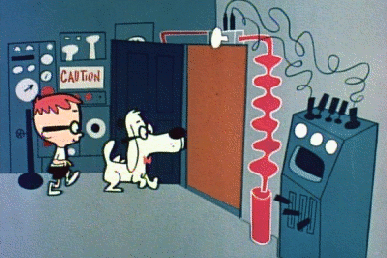Adding a lot by adding a little

I’m a Chessie and Conrail guy at heart. But you can’t really talk about the Penn Mary area without bringing the Canton Railroad into the conversation.
The Canton RR was started in 1906 as a way to bring customers into the then-undeveloped area. Neither the B&O nor the Pennsy wanted to extend their lines on speculation, so the Canton was born. To this day that have a strong presence in the area and interchange with CSX and Norfolk Southern. In my modeling era (July 1984), interchange was with Chessie and Conrail. And, not long ago, we established I’m a Chessie and Conrail guy at heart. (See how I brought that full circle?)
Anyone who has read anything by Tony Koester in the last 20 years or so is probably aware that for operations you can conceptually use an interchange as a universal industry. That is, you can send any type of car to it, with the conventional wisdom being that car could be going anywhere in the rail network for any purpose. And this is probably true for a Class 1 or even a Class 2 railroad. For a small shortline like the Canton, however, it’s not quite so universal. Shortlines typically serve a small(-ish) number of industries and therefore the interchange potential is much more limited.
 The good news is that, for a railroad with only about 20 miles of trackage, the Canton served a large number of customers comprising a reasonable variety of industries. In fact, as far as I can tell, they had more customers in that district than Chessie did.
The good news is that, for a railroad with only about 20 miles of trackage, the Canton served a large number of customers comprising a reasonable variety of industries. In fact, as far as I can tell, they had more customers in that district than Chessie did.
So it makes sense that to increase operational variety, I should include an interchange with the Canton on the layout. Even though I’m more limited than I might be with a larger interchange partner, the Canton provides me significantly more flexibility with car deliveries beyond the online industries I’m modeling.
Now, the hard part. What were those industries and who were those customers?
The short answer is, I don’t know.
I could wait until I find the exact era-specific data to start ops, or I can start with “good-enough” data and update later if/when more appropriate information comes along. If I had “good enough” data, that is.

More good news. This page, brought to you from the mists of the past by the handy Wayback Machine tool (and like Mr. Peabody, I love the Wayback Machine), provides a list of Canton RR’s customers as of January 2005. Yes, it’s 20+ years past my time frame.
Good Enough. (Having said that, if you have better customer data from the 1984 time period, please share!)
This forms a baseline for at least the categories of industries that may have been around in my era, and from that I can build out a list of the freight car types I’ll need for the Canton RR interchange. Then from there I can scope out the commodities that will be moving in and out on those cars. Not perfect, but better than guessing.
One last thing: As it turns out, with the demise of the GM Plant at Penn Mary, the Canton has taken over much of the yard, expanding well beyond what they used in 1984. The lead photo, a Canton SW-1500 switching cars was shot at Penn Mary during a visit to Baltimore in 2004 just prior to the plant closing. In fact, their headquarters building now stands where the B&O Yard Office used to stand. So in a technical sense, my track plan is wrong since their tracks at the time didn’t parallel the B&O’s. But it’s a compromise I’m willing to accept for operational flexibility.
Is this blog giving you what you want? Is it giving you too much of what you don’t?
Let me know in the comments. And don’t forget to subscribe!
I think National Beer on Dillion street was one their customers. They brought in grain( hops) as wll as cans , bottles , cardboard among other items.
Thanks for the information. I’ll definitely check that out.